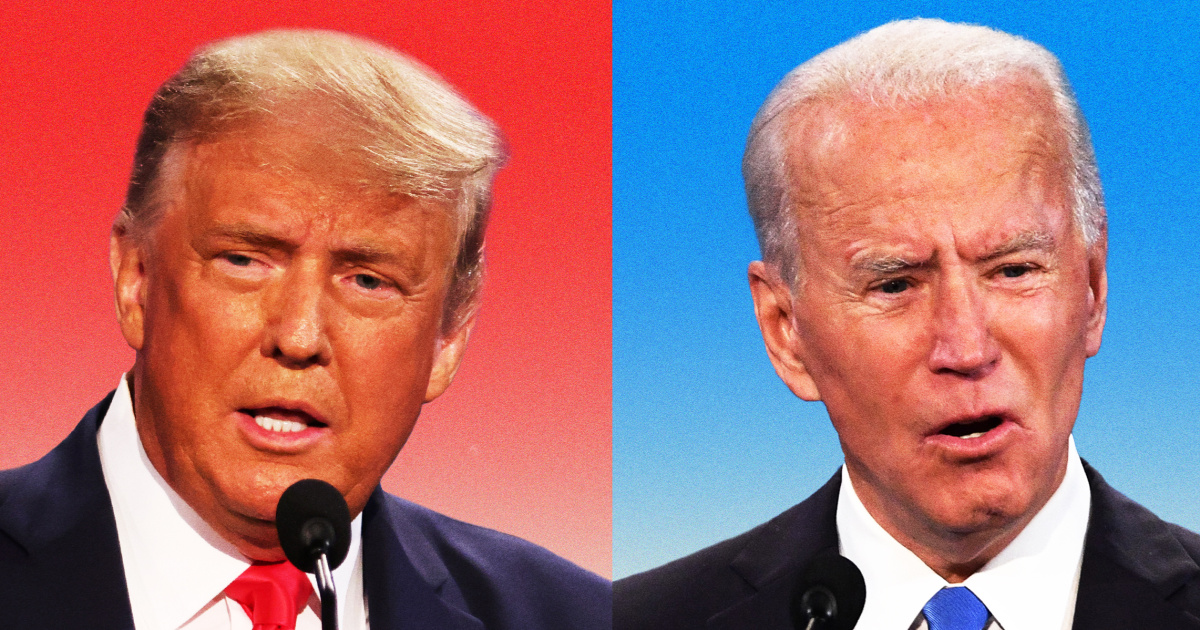World
Data used for Gaza famine claims changing as expert cautions 'no one seems to be trying to explain why'
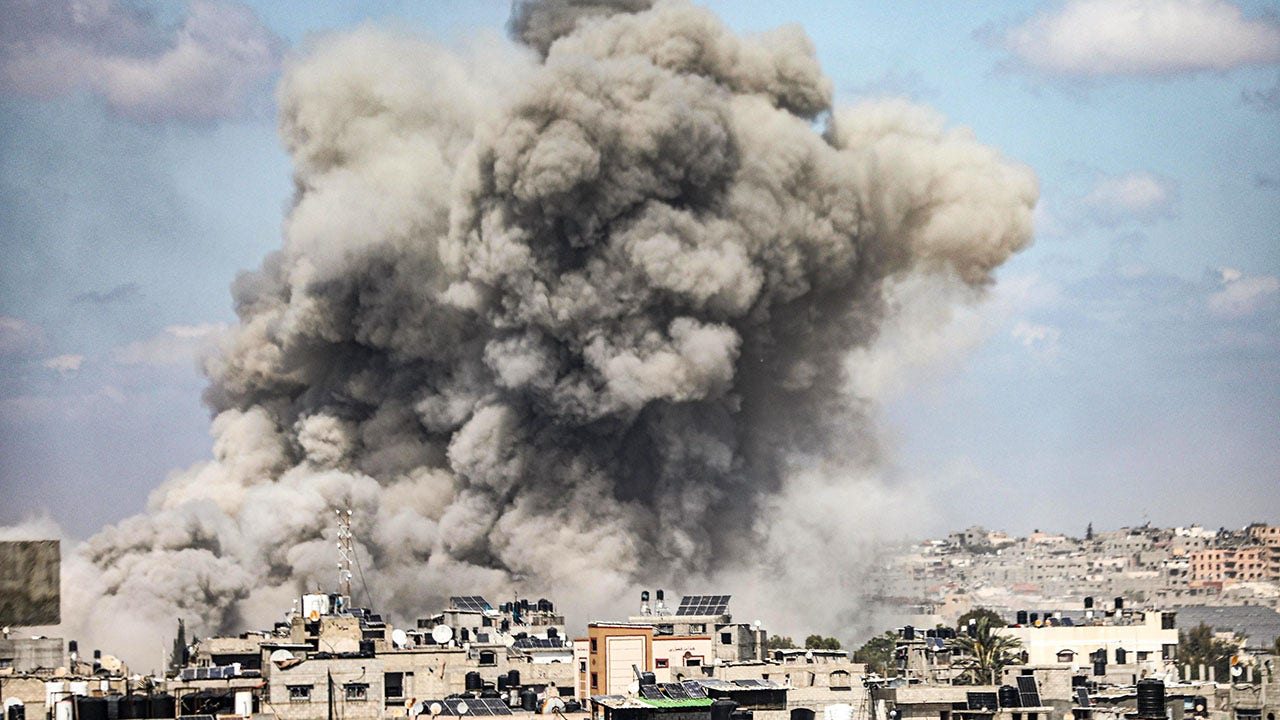
Dire warnings from the United Nations, the U.S. EU and aid organizations of mass starvation and famine among civilians in northern Gaza seem to be overstated, according to some experts.
“Leaders said that thousands of children were going to die, and it didn’t materialize, and no one seems to be trying to explain why,” David Adesnik, senior fellow and director of research for the Foundation for Defense of Democracies told Fox News Digital. Adesnik has been tracking recent increases in food availability in northern Gaza that have gone without comment from researchers and the media.
The first warning of famine came on March 18 in a report from the Integrated Food Security Phase Classification (IPC) Famine Review Committee (FRC), which stated famine was “projected and imminent” in northern Gaza and the Gazan governorates. Without “an immediate political decision for a ceasefire together with a significant and immediate increase in humanitarian and commercial access to the entire population of Gaza,” the FRC stated that there would be a markedly increased “impact on mortality and the lives of Palestinians.”
A day following the report, Secretary of State Antony Blinken echoed the report, noting during a press conference in the Philippines that “according to the most respected measure of these things, 100% of the population in Gaza is at severe levels of acute food insecurity. That’s the first time an entire population has been so classified.”
CIGARETTE SMUGGLING HAS CRIPPLED AID DELIVERY IN GAZA AS SMOKES GO FOR $25 APIECE
Palestinians shop for food and clothes at a bazaar in Jabalia, northern Gaza, on Jan. 15, 2024. (Mahmoud Shalha/Anadolu via Getty Images)
By May 31, the Famine Early Warning Systems Network (FEWS NET), sponsored by the U.S. Agency for International Development (USAID), reported that it was “possible, if not likely, that all three IPC thresholds for Famine…were met or surpassed in northern Gaza in April.”
On June 4, the FRC released a different prognosis, contradicting the FEWS NET’s results and stating they were not “plausible.” Among the reasons cited for disagreement was their finding that “while FEWS NET estimated the caloric availability in the area as covering only 59%- 63% of the needs…in April, the review done by the FRC estimates that this range would be 75% to 109% if commercial and/or privately contracted food deliveries were included,” and “157% if a higher estimate was used.”
Fox News Digital reached out to both the IPC and FEWS NET about the differences between their most recent reports. The IPC said that FRC analysts were unable to respond as they were at work on a forthcoming report, due for release on June 25, about conditions throughout Gaza.

A Palestinian woman works in a makeshift kitchen in the Jabalia refugee camp in the northern Gaza Strip on June 20, 2024. (OMAR AL-QATTAA/AFP via Getty Images)
FEWS NET pointed out that where FRC suggested there was not enough evidence to determine barriers to accessing aid, FEWS NET “observed significant challenges in both physical and financial access.”
“Analysis of acute food insecurity does not (and should not) only consider available supply, but access to and utilization of available food,” FEWS NET explained.
FEWS NET also stated that “when combining FEWS NET’s estimate of kilocalories available from food assistance with FEWS NET’s estimate of kilocalories available from subsidized bread from [World Food Programme (WFP)]-supported bakeries and [Israel’s Coordinator of Government Activities in the Territories]-facilitated commercial/private sector food commodities, the differences between FEWS NET and the FRC’s estimates are not significant. FEWS NET estimates that these three sources combined offer a total supply of nearly 150% of caloric needs in the month of April.”
GROWING CONTROVERSY OVER BIDEN’S GAZA PIER FUELS CONCERNS OVER COST, SECURITY
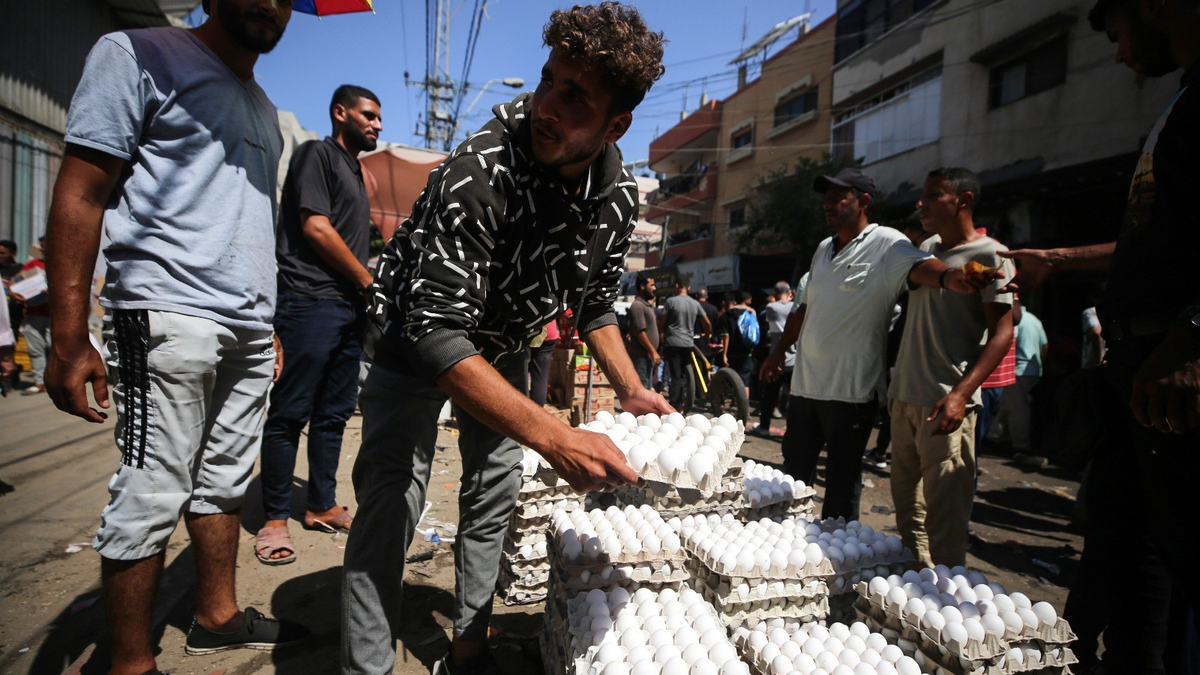
Eggs are shown at a street market in Deir al-Balah, central Gaza Strip, on June 21, 2024. (Majdi Fathi/TPS-IL)
Adesnik, however, pointed out that FEWS NET’s original assessment did not include calories obtained through World Food Program (WFP) bread or commercial and private sector foods, noting that the FRC found that “FEWS NET simply ignored 940 tons of sugar, flour, salt and yeast that the World Food Program delivered to north Gaza bakeries. The tone of the FRC review is always respectful, yet it exposes the extent to which FEWS NET made indefensible assumptions that all serve to underestimate Israel’s efforts to help more food reach the people of northern Gaza.”
While Adesnik said that without question “hunger persists in northern Gaza and there is a deep need for humanitarian assistance,” he also said that the “stark differences” between FEWS NET and FRC’s assessments “underscore the subjectivity inherent in famine assessments, along with the potential for politicization.”
As an example, Adesnik noted that a lack of humanitarian aid reaching Gazans was “an integral part of the charges” that the International Criminal Court leveled against Israeli Prime Minister Benjamin Netanyahu and Minister of Defense Yoav Gallant on May 20 when they issued arrest warrants for the men. The ICC believes Netanyahu and Gallant “bear criminal responsibility” for war crimes and crimes against humanity.” Among the allegations the men face is that they “plan[ned] to use starvation as a method of war.”

U.N. World Food Programme Executive Director Cindy McCain (United Nations via Reuters Connect/File)
Adesnik said that “regardless of whether the situation in Gaza improved because the famine declaration was premature or because Israel facilitated dramatically more shipments of food in March and April, this just shows how laughable the ICC’s charges are.”
Fox News Digital reached out to the ICC to ask whether they would change their assessment that Israeli officials intentionally starved Gazans based on FRC findings about food availability in April, prior to charges being filed. The ICC responded by directing Fox News Digital to its statement announcing war crimes charges against Israeli and Hamas leaders.
STUDY SAYS FOOD AID MEETS QUALITY, QUANTITY FOR GAZANS AS UN, ICC SAY ISRAEL STARVING CIVILIANS

IDF forces are seen operating in Rafah in the Gaza Strip. (IDF Spokesman’s Office)
Other institutions likewise seem reticent to acknowledge that the dire threats said to be “imminent” in March have not come to pass.
The Food and Agriculture Organization (FAO) of the United Nations and the WFP’s Hunger Hotspots outlook on food insecurity from June to October notes that “in Palestine, over 1 million people – half of the population of the Gaza Strip – is expected to face death and starvation (IPC Phase 5) by mid-July.”
In response to Fox News Digital’s questions about whether the FAO planned to amend its report based on the FRC’s latest information on food availability in Gaza, the FAO news team stated that the organization would wait until the FRC released its updated report to revise its assessment.
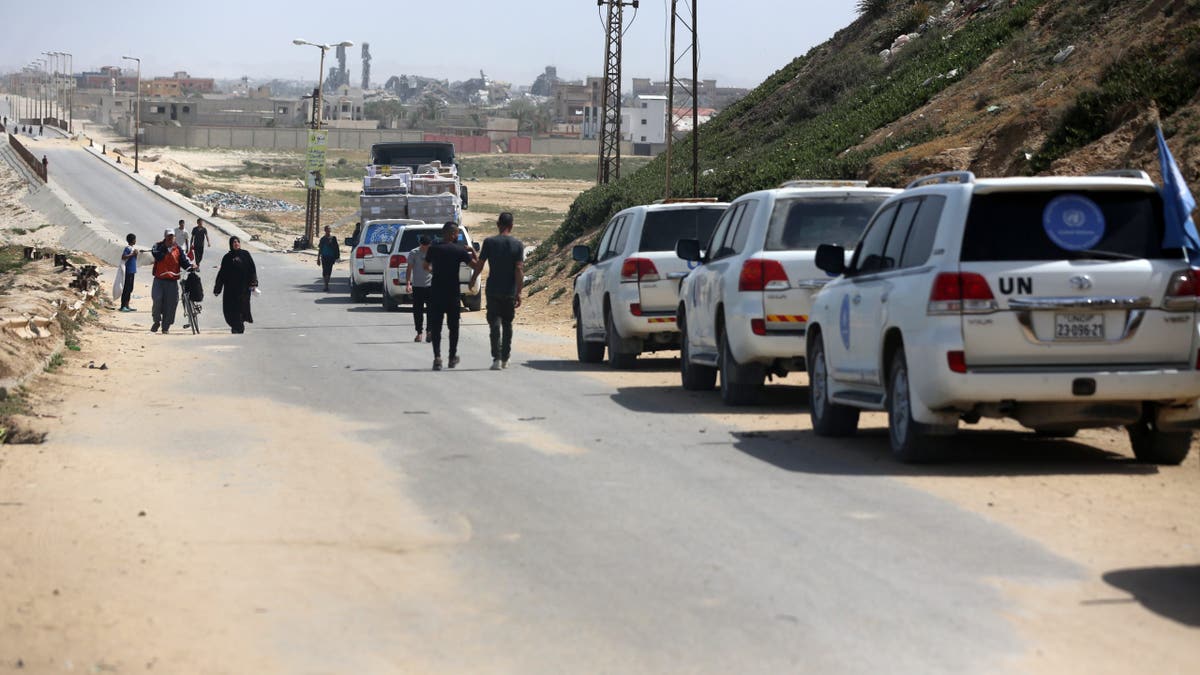
Humanitarian aid trucks from the U.N. and World Health Organization wait to enter the central Gaza Strip on Apr 25, 2024. (Majdi Fathi/TPS)
A State Department spokesperson responded to Fox News’ requests for comment about the disparities between FEWS NET and FRC reporting by expressing concern about the “more than 2 million people and the most rapid onset of the levels of food insecurity that we’ve ever seen.” Noting that neither FRC nor FEWS NET confirmed that a famine was ongoing, the spokesperson said that “Gaza remains in a dire food security crisis with unacceptable rates of child malnutrition and elevated levels of associated sickness and deaths. And the whole point of measurements and early warning is to spur action now and not wait until it’s too late, and we’ve definitively reached a specific threshold.”
The increased aid entering Gaza has been affected in recent weeks by cigarette smuggling that “now threatens United Nations aid convoys.” Attacks on convoys thought to hold coveted cigarettes have led the U.N. to stop picking up aid, according to Israel’s TPS news agency.
Citing the Coordination of Government Activities in the Territories (COGAT), the TPS reported that 285 aid trucks were transferred to the Gaza Strip from the Kerem Shalom and Erez crossings. Of these, “only 88 aid trucks were collected by U.N. aid agencies and the private sector.” According to COGAT, “over 1,000 trucks” and “hundreds of aid pallets” await collection and distribution.
“The U.N. needs to scale up,” COGAT posted online on June 20, sharing an aerial video of unclaimed aid in the JLOTS collection and distribution compound.
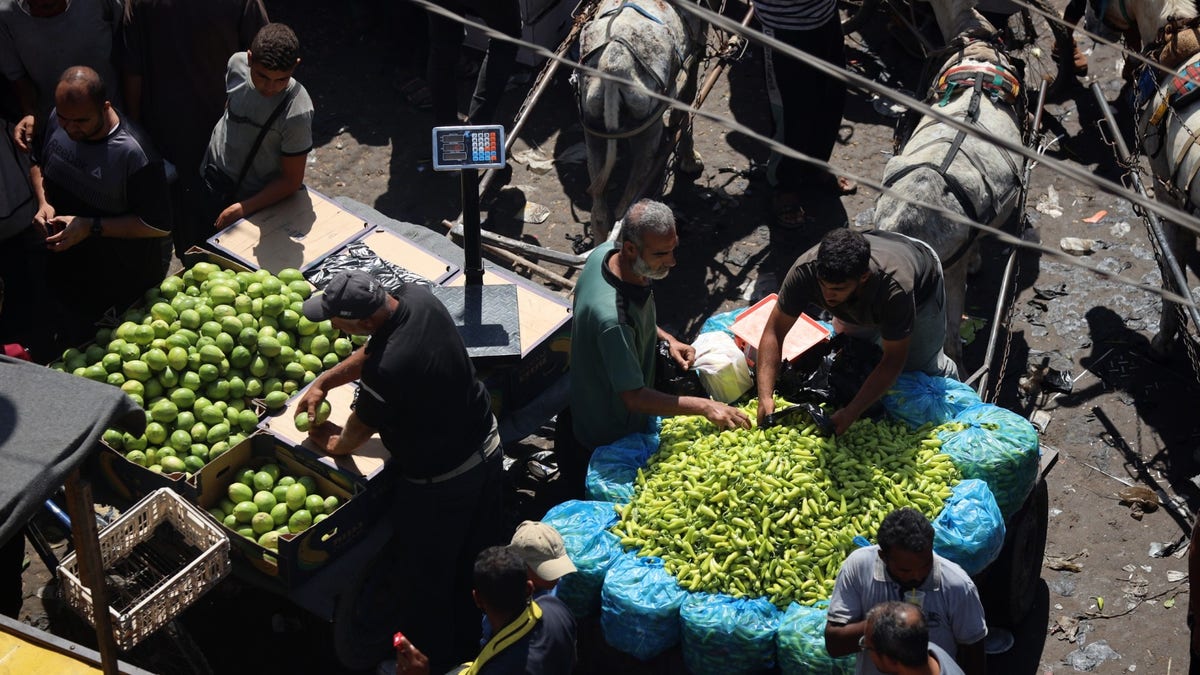
People buy food at a market in Deir al-Balah, central Gaza Strip, on June 21, 2024. (Majdi Fathi/TPS-IL)
The WFP’s country director for the Palestinians, Matthew Hollingworth, recently stated in an interview with CNN that “in terms of our operations, we have been able to bring more food into the north over the past few weeks, which has improved access to basic food commodities for people there, but we need to diversify the assistance given. It’s not enough to have basic food commodities. There needs to be basic health care, there needs to be water and sanitation, otherwise, we won’t turn the curve on famine.”
The WFP spokesperson did not respond to Fox News Digital’s request for comment about whether Hollingworth believed famine to be impending in Gaza.
As various entities continue to indicate that Israel’s efforts to aid the civilian population have fallen short, FRC’s assessment is in line with a study by academics and public health officials in Israel who found that aid entering the Gaza Strip could provide for the population of 2.4 million and meet its nutritional needs.

World
A 'disaster': Biden's shaky start in debate with Trump rattles Democrats

World
Kenyan police confront protesters day after president withdraws tax increase bill
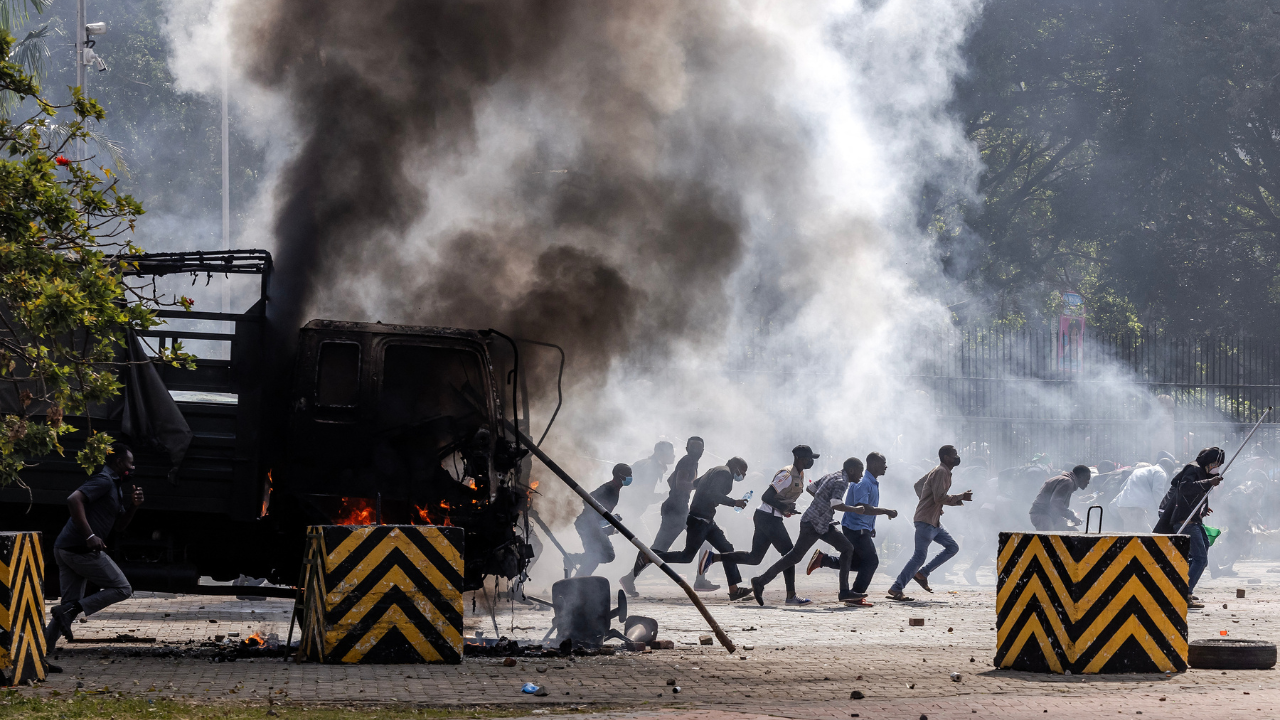
- Protests have continued across Kenya despite President William Ruto’s withdrawal of a controversial tax hike bill.
- Kenyan police on Thursday fired teargas at protesters in Nairobi and blocked roads to the presidential palace.
- Crowds in Mombasa, Kisumu and other cities have demanded President Ruto’s resignation.
Kenyan police fired teargas at dozens of protesters in Nairobi and blocked off roads to the presidential palace on Thursday as crowds took to the streets again nationwide, even after the president bowed to pressure to withdraw a tax hike bill.
Crowds called for President William Ruto to go further and step down in the capital, Mombasa, Kisumu and other centers, though the turnout was well down from the height of the mass rallies sparked by the tax measures over the past week.
Ruto withdrew the legislation including new taxes and hikes on Wednesday, a day after at least 23 people were killed in clashes at protests sparked by his plans, and parliament was briefly stormed and set alight.
KENYA’S PRESIDENT BACKTRACKS ON CONTROVERSIAL TAX INCREASES AFTER DEADLY PROTESTS SHAKE NATION
He is grappling with the most serious crisis of his two-year-old presidency as the youth-led protest movement has grown rapidly from online condemnations of the tax hikes into mass rallies demanding a political overhaul.
Protesters run to take cover outside the Kenyan Parliament after storming the building during a nationwide strike to protest against tax hikes in downtown Nairobi, on June 25, 2024. Kenyan police fired teargas at dozens of protesters and blocked off roads to the presidential palace on Thursday as crowds took to the streets again nationwide, even after the president bowed to pressure to withdraw a tax hike bill. (LUIS TATO/AFP via Getty Images)
Dropping the bill has also hit plans to reduce the budget deficit and borrowing, as demanded by lenders including the International Monetary Fund.
Seven people were rushed to hospital with gunshot wounds in the town of Homa Bay in western Kenya on Thursday, Citizen TV reported, without going into further detail. Police commander Hassan Barua said he had sent officers to check on the report.
In Nairobi, police and soldiers patrolled the streets and blocked access to State House. Police fired teargas to disperse several dozen people who had gathered in the center of the city.
UN-BACKED CONTINGENT OF FOREIGN POLICE ARRIVES IN HAITI AS KENYA-LED FORCE PREPARES TO FACE GANGS
Doctors volunteer group Medics for Kenya said its staff at the Jamia Mosque/Crescent hospital had been hit by teargas, and that it condemned in “the strongest terms possible violence meted out on our volunteer medical teams”.
Reuters reporters saw army vehicles on the streets after the government deployed the military to help police.
Elsewhere, hundreds of protesters gathered in the port city of Mombasa and in the western city of Kisumu, local television footage showed, although those gatherings appeared peaceful.
“We are only coming here so that our voice can be heard, us as Gen Z, us as Kenyans, we are one,” said Berryl Nelima in Mombasa. “So the police should stop killing us, we are just peaceful protesters, we are unarmed.”
The protest movement has no formal leadership structure and has largely responded to messages, banners and slogans on social media. Posts on Thursday suggested protest supporters were divided on how far to carry the demonstrations.
“Let’s not be foolish as we fight for a better Kenya,” Boniface Mwangi, a prominent social justice activist, said in an Instagram post.
He voiced support for demonstrations on Thursday but opposed calls to invade State House, the president’s formal offices and residence, a move that he said could spur more violence and be used to justify a crackdown.
KENYAN PROTESTERS VOW TO CONTINUE DEMONSTRATIONS AFTER VIOLENT CLASHES LEAVE 23 DEAD
While some protest supporters said they would not demonstrate on Thursday as the finance bill had been scrapped, others pledged to press on, saying only Ruto’s resignation would satisfy them.
“Right now is not about just the finance bill but about #RutoMustGo,” political activist and protester Davis Tafari told Reuters in a text message. “We have to make sure that Ruto and his MPs have resigned and fresh elections are held … We occupy State House for dignity and justice.”
Eli Owuor, 34, from Kibera, an informal settlement and a traditional hotbed of protests, also said he was prepared to join a push on to State House.
“We may just need to visit Zakayo today in his house to prove that after parliament we can occupy State House,” he said, using a nickname protesters have given to Ruto that references a biblical tax collector viewed as corrupt.
DIALOGUE, AUSTERITY ARE NEXT STEPS
In a speech on Wednesday, Ruto defended his push to raise taxes on items such as bread, cooking oil and diapers, saying it was justified by the need to cut Kenya’s high debt, which has made borrowing difficult and squeezed the currency.
But he acknowledged that the public had overwhelmingly rejected the finance bill. He said he would now start a dialogue with Kenyan youth and work on austerity measures, beginning with cuts to the budget of the presidency.
The International Monetary Fund, which has been urging the government to cut its deficit to obtain more funding, said it was closely monitoring the situation in Kenya.
“We are deeply concerned about the tragic events in Kenya in recent days,” the IMF said in a statement. “Our main goal in supporting Kenya is to help it overcome the difficult economic challenges it faces and improve its economic prospects and the well-being of its people.”
Ratings agency Moody’s said the shift in focus to cutting spending rather than boosting revenue will complicate the disbursement of future IMF funding and slow the pace of fiscal consolidation.
Analysts at JPMorgan said they had maintained their forecasts for a deficit of 4.5% of GDP in FY2024/2025, but acknowledged the government and IMF targets could be revised in light of recent developments.
They said the Central Bank of Kenya was unlikely to begin cutting rates until the final quarter of this year.
World
The Take: How is Argentina faring under Javier Milei?

PodcastPodcast, The Take
Argentina’s lower house votes on Javier Milei’s package of economic reforms. How will this affect ordinary Argentinians?
Argentina’s lower legislative house is set to approve President Javier Milei’s package of economic reforms. Despite signs of economic improvement on the macro level, the consequences of Milei’s spending cuts for the average person have been profound. How have everyday Argentinians been faring under Javier Milei?
In this episode:
- Teresa Bo (@TeresaBo), Al Jazeera correspondent
Episode credits:
This episode was produced by Tamara Khandaker, Chloe K. Li, and Sonia Bhagat with Amy Walters, Duha Mosaad, Manahil Naveed, Veronique Eshaya, and our host Malika Bilal.
Our sound designer is Alex Roldan. Our lead of audience development and engagement is Aya Elmileik. Munera Al Dosari and Adam Abou-Gad are our engagement producers.
Alexandra Locke is The Take’s executive producer, and Ney Alvarez is Al Jazeera’s head of audio.
Connect with us:
@AJEPodcasts on Twitter, Instagram, Facebook, Threads and YouTube
-

 News1 week ago
News1 week agoNYC pastor is sentenced to 9 years for fraud, including taking a single mom's $90,000
-

 Crypto1 week ago
Crypto1 week agoIdris Elba Promotes Cryptocurrency in West Africa – BORGEN
-

 News1 week ago
News1 week agoRead the Ruling by the Virginia Court of Appeals
-

 News7 days ago
News7 days agoTracking a Single Day at the National Domestic Violence Hotline
-

 Politics1 week ago
Politics1 week agoTrump classified docs judge to weigh alleged 'unlawful' appointment of Special Counsel Jack Smith
-

 News7 days ago
News7 days agoSupreme Court upholds law barring domestic abusers from owning guns in major Second Amendment ruling | CNN Politics
-

 Politics7 days ago
Politics7 days agoSupreme Court upholds federal gun ban for those under domestic violence restraining orders
-

 Crypto1 week ago
Crypto1 week agoFactors Driving the Evolution of Cryptocurrency Markets












